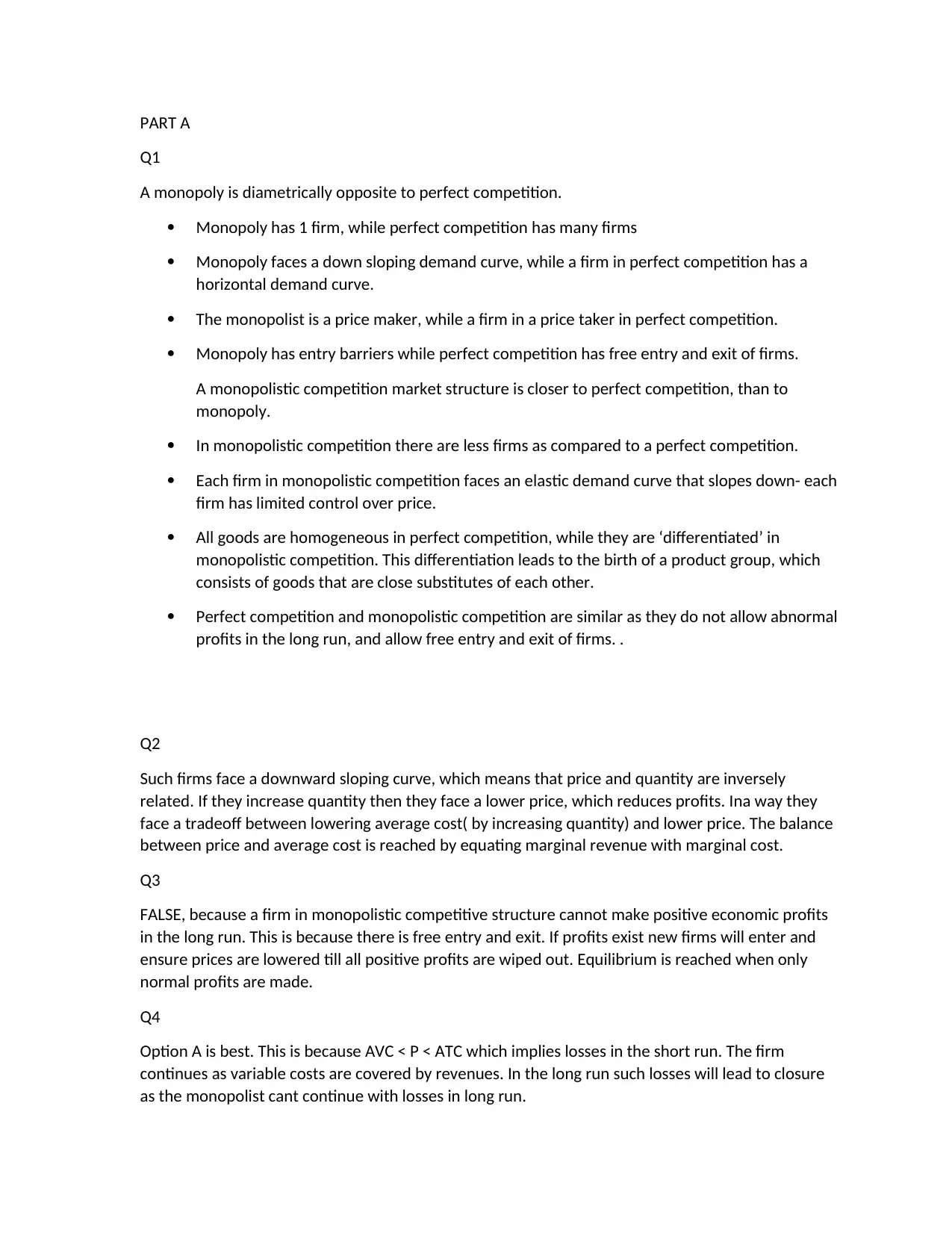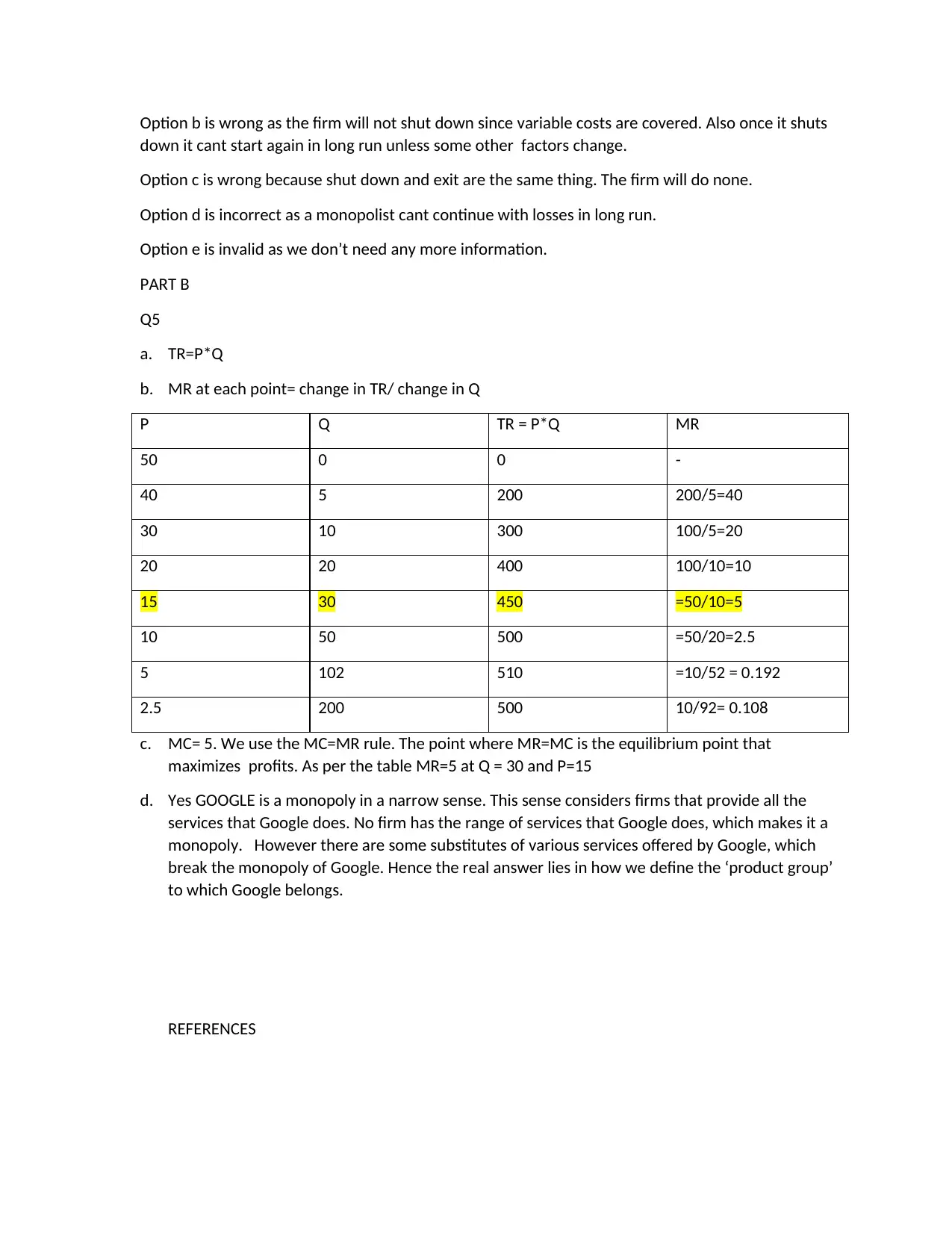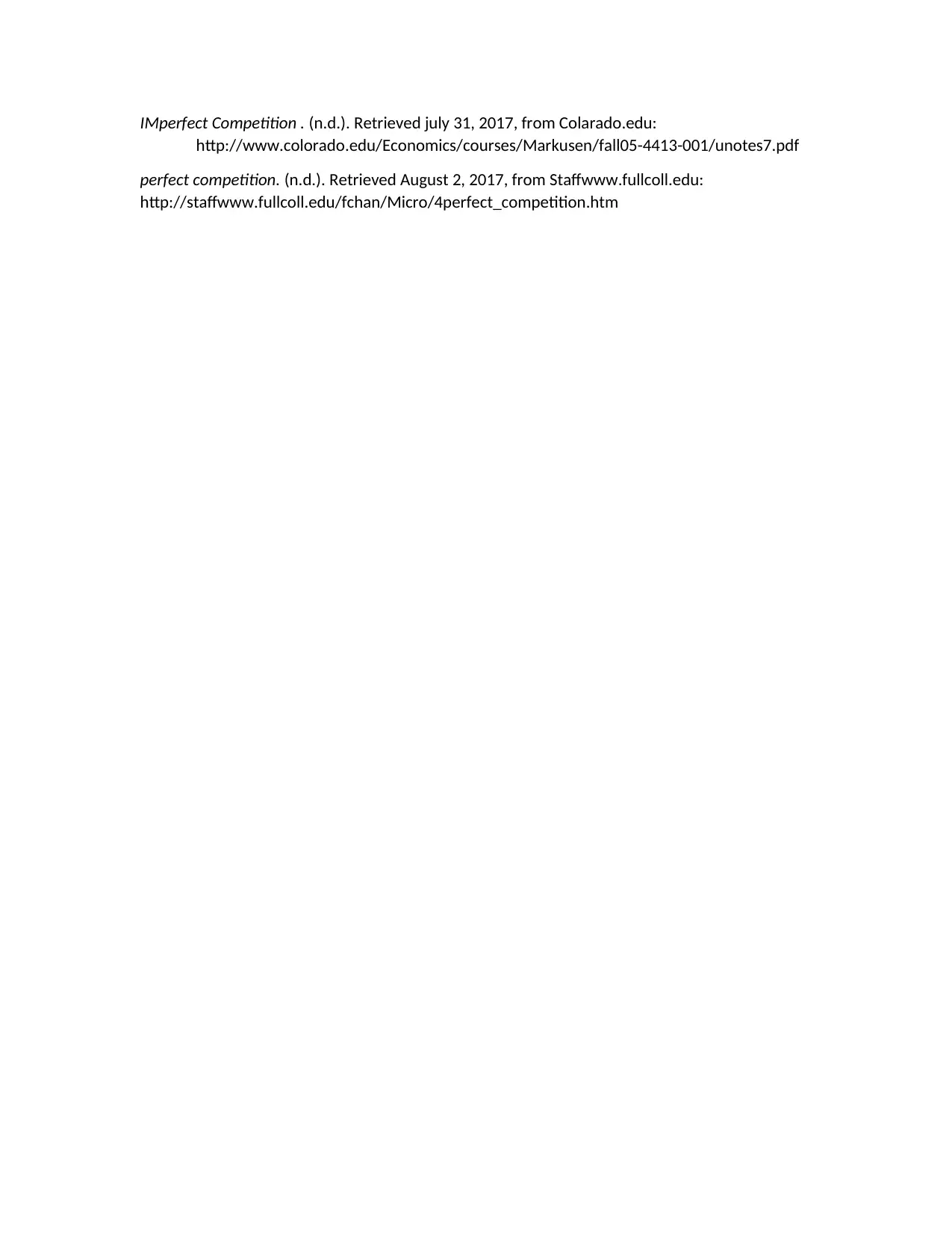Economics Homework: Market Structure, Pricing, and Profit Analysis
VerifiedAdded on 2019/10/30
|3
|691
|150
Homework Assignment
AI Summary
This economics assignment explores the concepts of monopoly, perfect competition, and monopolistic competition. Part A contrasts monopoly with perfect competition, highlighting differences in the number of firms, demand curves, price control, and barriers to entry. It also discusses the characteristics of monopolistic competition and its similarities to perfect competition. The assignment then analyzes the pricing and output decisions of monopolists, the relationship between marginal revenue and marginal cost, and the long-run profit scenarios in monopolistically competitive markets. Part B includes calculations of total revenue, marginal revenue, and the determination of profit-maximizing output based on the marginal cost rule. The assignment concludes with a discussion of whether Google can be considered a monopoly. The provided solution offers insights into market structures, pricing strategies, and profit analysis.
1 out of 3










![[object Object]](/_next/static/media/star-bottom.7253800d.svg)